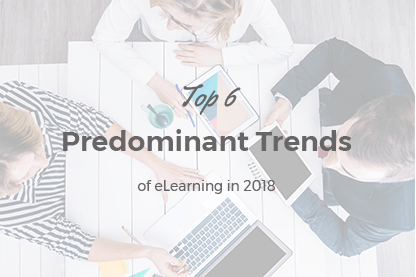Videos are an integral part of e-Learning businesses. The quality of content and the level of interactivity determine how engaged students are in your course. Most Learning Management Systems, including JoomLMS, support embedding videos in their online courses.
Videos are an integral part of e-Learning businesses. The quality of content and the level of interactivity determine how engaged students are in your course. Most Learning Management Systems, including JoomLMS, support embedding videos in their online courses.
Videos require considerable investment. The steps in video production such as setting up lighting, production set, video shooting, and video editing, all require considerable effort, time and costs. The problem with putting your premium video content online comes in the form of potential piracy. Torrent sites and Youtube are filled with pirated video content taken from premium sources. There are 100s of free downloaders and tools like IDM, Video-Download-Helper; these can easily download videos hosted on YouTube, Vimeo or on self-hosted servers. A single student paying for content, downloading it and sharing it with 3-4 friends is a common scenario. Thus, it ultimately affects your revenue. We present a guide below with various options to safeguard video content, thus increasing course revenues.

There are two steps to securing your video content in your Learning Management System:
Step 1. Secure Login/ Membership:
The first step to secure content is logging in to LMS: Allowing only registered users to access your content and safeguarding their login credentials is the first important step towards securing online content. As explained in the blog post "LMS Security Matters", adequate steps are taken to ensure security on server and membership side.
Step 2. Protecting video from Downloaders and Plugins:
The following data shows that typical pirate age is 18-29 - essentially a tech-savvy group not willing to pay for content. These young tech-proficient people use free tools and hacks available online to share and pirate content. The prevalence of easy download tools means that a secure video hosting solution is necessary to protect your own content. You want only your subscribers to access your premium videos. The scenario of a paid subscriber accessing the video, downloading, and sharing it with their group of friends is not desirable - the process of illegal sharing is causing you to directly lose customers.
I will now review the technical options and external tools that you can use to safeguard your content. They are generally used in combination to ensure better security.
1. Domain Whitelisting:
Video URL embedded on your domain can be accessed by opening the Network Panel, and can be shared subsequently on other domains. Because of this, it is necessary to have your video URL restricted to your site page only. This feature is called Domain (URL) whitelisting, and is widely available across paid video hosting providers, including Vimeo. You can implement it with your own development team as well. It is important to note that whitelisting is a deterrent from sharing of video, but does not by itself prevent downloading. The points that I list below focus more on preventing video downloading.
2. RTMPE Streaming Protocol:
Real Time Messaging Protocol Encrypted (RTMPE) is a streaming protocol mainly used for live streaming. It has also found applications in streaming recorded video (video on demand). Its streaming protocol is quite different from other HTTP based streaming protocols. For this reason popular downloaders and plugins have not been designed to download from RTMP. This, however, does not make RTMP streaming completely secure, as specialized toolkits such as RTMPdump can still be used to download the stream encrypted through RTMPE. A public key exchange mechanism means that RTMPE streaming is vulnerable to downloading. One problem with RTMP is that the video streams and loads simultaneously, there is no future buffer. It is a major problem for viewers with slow internet connection. No allowance for buffer conservation also leads to high bandwidth usage.
3. HLS Encrypted (HLS E):
HLS is a widely used streaming protocol. It is implemented and maintained by Apple. HLS streaming also comes with a 128 bit encryption. The weak point of any encrypted data transfer is the vulnerability of its key exchange mechanism. In HLS-E , the key is transmitted along with the stream. Thus the system is quite open and most of the downloaders and tools are able to fetch this key and decrypt the stream. HLS is a very good protocol to stream smooth content, but it is recommended not to rely on it for security.
4. IP/GEO Restriction:
You can ask your video vendor for the IP or Geo Based restriction. This is more of a restriction on who can access the content, rather than security for the content. You can use this restriction to make your videos unavailable in a specific country/organization. The user who does have access to the restricted content can still capture the content, and put it on some public forum for universal use. Therefore, proper DRM security must be implemented along with this feature.
5. DRM:
The costs of developing a DRM technology mean that most companies that offer DRM services, like VeriMatrix, work only with big media enterprises to build custom encryption and prevent streaming piracy. These are highly secure and comprehensive solutions. However the cost of these DRMs and the effort involved in their integration is also huge. You need to have your own streaming infrastructure as these companies only provide support for security, and not for video hosting itself. Overall, the monetary and technical logistics of this solution has kept it out of reach of online education companies.
Online Video Platforms (OVPs), including VdoCipher, offer a DRM that is pre-packaged with video hosting to provide a ready-to-go solution. The use of modified HLS with proprietary encryption & backend licensing allows for a new streaming protocol which provides much higher security and protection against all downloaders. The price point and integration with LMS also makes security-focused OVPs suitable for use by e-learning content providers.
By explaining how secure video hosting works I aimed to help e-learning content providers to make a more informed decision about which OVP to use.
Apart from security measures some great additions to videos in eLearning are the following:
- Quizzes inside video to increase interactivity;
- Comments & feedback to engage students directly;
- Learner Analytics to gauge teaching effectiveness;
- Storytelling approach for engaging learners;
- Gamifying aspects of your online video course.
I’ll be happy to receive your valuable feedback and insights in the comment sections.
About the Author:
Siddhant is Director at VdoCipher. He has worked with e-Learning businesses across 6 continents to help them deliver videos to students in a smooth and secure manner. He has hands-on experience with technologies involving course streaming, monetization & protection from piracy.
What to read next?
14 Things You Might Not Know JoomLMS Can Do
LMS Security Matters
The Secret of an Effective ELearning Course [Infographic]








